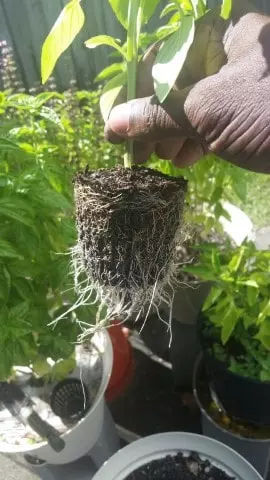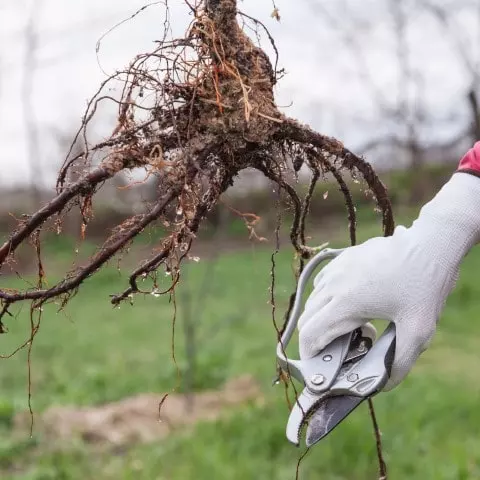Pruning the roots of a plant is something that tends to give a lot of respect to those who are less accustomed to it, but it is a very common and usual technique, which can provide great benefits to a plant when carried out properly. If you want to learn when to do root pruning and how to do it, stay and keep reading this article in which we show you a simple and practical guide on the subject.
Table of Contents
When To Prune Roots
There are several reasons to prune the roots of a plant. Roots are the organ by which the plant absorbs nutrients, but this absorption can only be carried out by the root hairs, which only young roots have.
For this reason, the roots of the plant never stop growing, and especially in the case of potted plants, they end up colonizing all the available space, exhausting the nutrients and requiring a transplant to a larger container or simply a renewal of the space by pruning the roots.
Cutting the roots when transplanting the plant to a new space or container can also help it to develop better and adapt more quickly to its new space, stimulating the growth of new roots, even in the case of outdoor plants.
Of course, pruning should always be done during the plant’s vegetative rest period, so that we stress it and damage it as little as possible. In most cases, this means that pruning should be carried out sometime between late autumn and winter.
How To Prune The Roots Of a Potted Plant
When a potted plant has grown too much, its roots end up sticking to the ends of the container and create a solid mass that ruins the properties of the substrate, eventually causing, with time, the death of the plant. In these cases, it is necessary to resort to root pruning in time, whether the individual is transplanted to a larger space or if we want to keep it in that same container to prevent it from growing more. Follow these steps:
- Start by removing the plant from its current pot. If the size of the plant allows it, turn it upside down, carefully picking up the root ball. If it is too large for that, turn it on its side and roll it over, gently tapping the sides, to separate it from the pot. If you still can’t remove it because the roots are too clogged, you can water it. It will be heavier, but it will also separate more easily.
- Once you have the root ball separated, take a sharp knife and sterilize it with alcohol. Then, very carefully, cut the outermost part that touched the pot, both soil and roots, making a tighter circle than the one the pot formed. Cut the thin and thin roots without fear, but avoid damaging those that you notice of solid wood, as well as primary roots like a bulb, which would kill the plant very probably.
- After cleaning the outer layer, carefully remove the soil with your fingers or a pick so that you can examine the condition of the roots. Prune darkened roots or those that look soft or wet, and apply fungicide if necessary.
- Carefully disentangle the roots as much as possible, and trim the root ball to a maximum of one-third of its original size, i.e., reduce the size of the plant.
- Finally, you can plant the root ball again in a new container, with a new substrate and enriched with fertilizer, although the new roots will be more efficient in absorbing nutrients, so it will need less than before. Give the plant a few days in a semi-shaded location to recover and after a week you can return it to its final location.

Root Pruning Trees
Before you start pruning the roots of a tree you need to evaluate its state of health. If after checking it you get bad results, we recommend not to prune it. This also applies to old trees that cannot cope with this type of treatment. Similarly, avoid performing this type of operation if the tree does not have good stability. Keep in mind these tips for pruning the roots of a tree:
- Pruning the roots is a process that will put the tree to the test, so if you are not an expert it is always better to resort to professionals.
- If you have all the knowledge you need to prune the roots of a tree, start by determining the optimum size of the root ball to avoid overly aggressive pruning. Next, you need to calculate and mark the drip line that the tree needs to hydrate so that pruning does not interrupt this necessary process of growth.
- If you want to make sure you prune correctly, never remove more than 20% of the above-ground roots. To remove them, use a sharp spade to cut only the necessary roots and make a clean cut to avoid possible diseases.
- Finally, make sure you have adequate moisture after pruning. To do this, water constantly to keep the area near the roots with optimum humidity, avoiding waterlogging.
- Also, remember that each species prefers a different season of the year for this type of treatment. Consult the characteristics of your tree to avoid pruning during the flowering and growing months.
We hope this article about root pruning will be useful. We recommend our article about when prune fruit trees.


